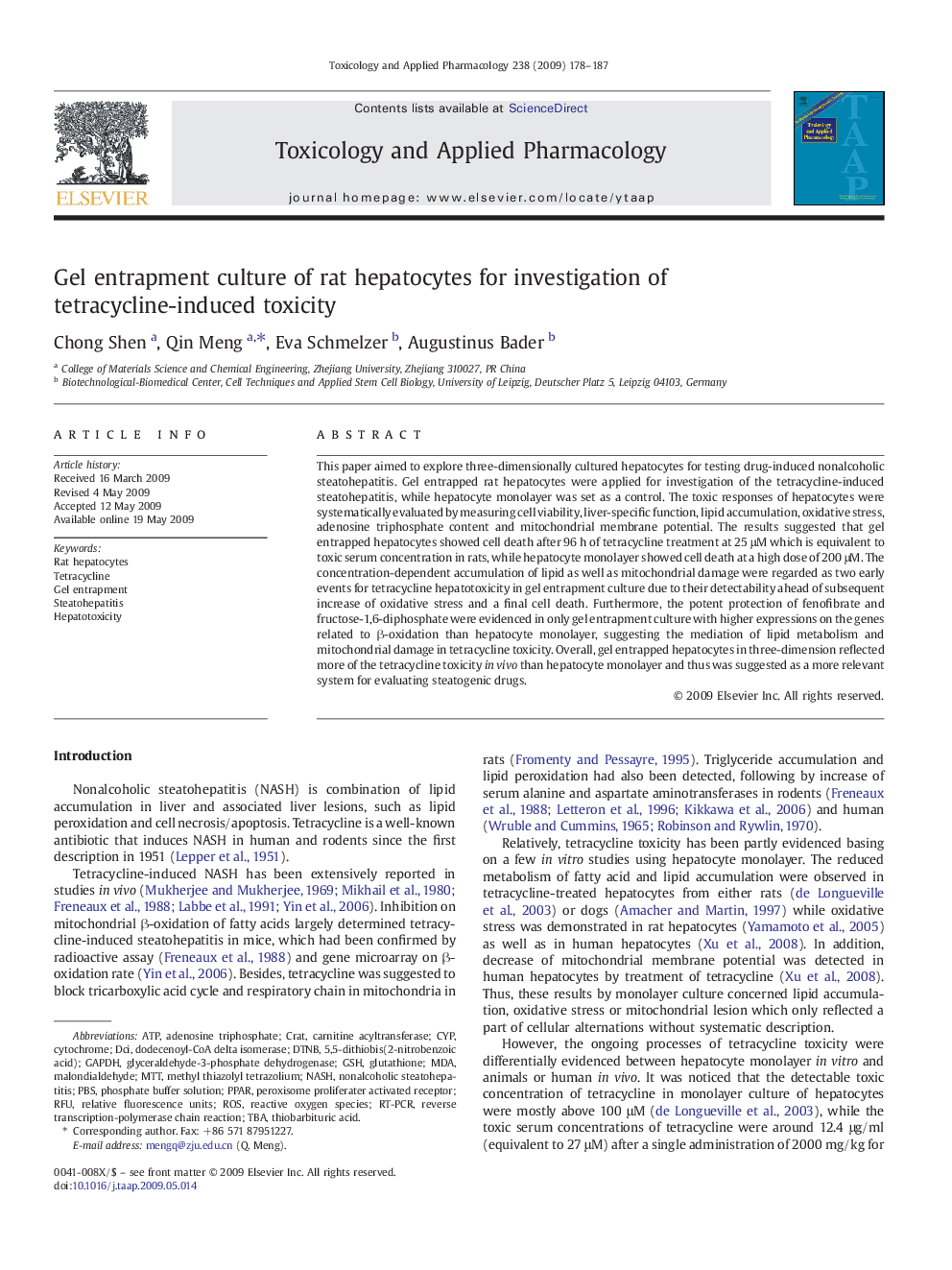| Article ID | Journal | Published Year | Pages | File Type |
|---|---|---|---|---|
| 2570233 | Toxicology and Applied Pharmacology | 2009 | 10 Pages |
Abstract
This paper aimed to explore three-dimensionally cultured hepatocytes for testing drug-induced nonalcoholic steatohepatitis. Gel entrapped rat hepatocytes were applied for investigation of the tetracycline-induced steatohepatitis, while hepatocyte monolayer was set as a control. The toxic responses of hepatocytes were systematically evaluated by measuring cell viability, liver-specific function, lipid accumulation, oxidative stress, adenosine triphosphate content and mitochondrial membrane potential. The results suggested that gel entrapped hepatocytes showed cell death after 96 h of tetracycline treatment at 25 μM which is equivalent to toxic serum concentration in rats, while hepatocyte monolayer showed cell death at a high dose of 200 μM. The concentration-dependent accumulation of lipid as well as mitochondrial damage were regarded as two early events for tetracycline hepatotoxicity in gel entrapment culture due to their detectability ahead of subsequent increase of oxidative stress and a final cell death. Furthermore, the potent protection of fenofibrate and fructose-1,6-diphosphate were evidenced in only gel entrapment culture with higher expressions on the genes related to β-oxidation than hepatocyte monolayer, suggesting the mediation of lipid metabolism and mitochondrial damage in tetracycline toxicity. Overall, gel entrapped hepatocytes in three-dimension reflected more of the tetracycline toxicity in vivo than hepatocyte monolayer and thus was suggested as a more relevant system for evaluating steatogenic drugs.
Keywords
PBS5,5-dithiobis(2-nitrobenzoic acid)MDACRATRFUDCIPPARDTNBRT-PCRGAPDHGSHTBACyPRat hepatocytesMTTROSAdenosine TriphosphateATPSteatohepatitisnonalcoholic steatohepatitisThiobarbituric acidTetracyclineGel entrapmentHepatotoxicitycytochromemalondialdehydemethyl thiazolyl tetrazoliumphosphate buffer solutionNash Relative Fluorescence Unitsreverse transcription-polymerase chain reactioncarnitine acyltransferaseGlutathioneglyceraldehyde-3-phosphate dehydrogenaseReactive oxygen species
Related Topics
Life Sciences
Environmental Science
Health, Toxicology and Mutagenesis
Authors
Chong Shen, Qin Meng, Eva Schmelzer, Augustinus Bader,
